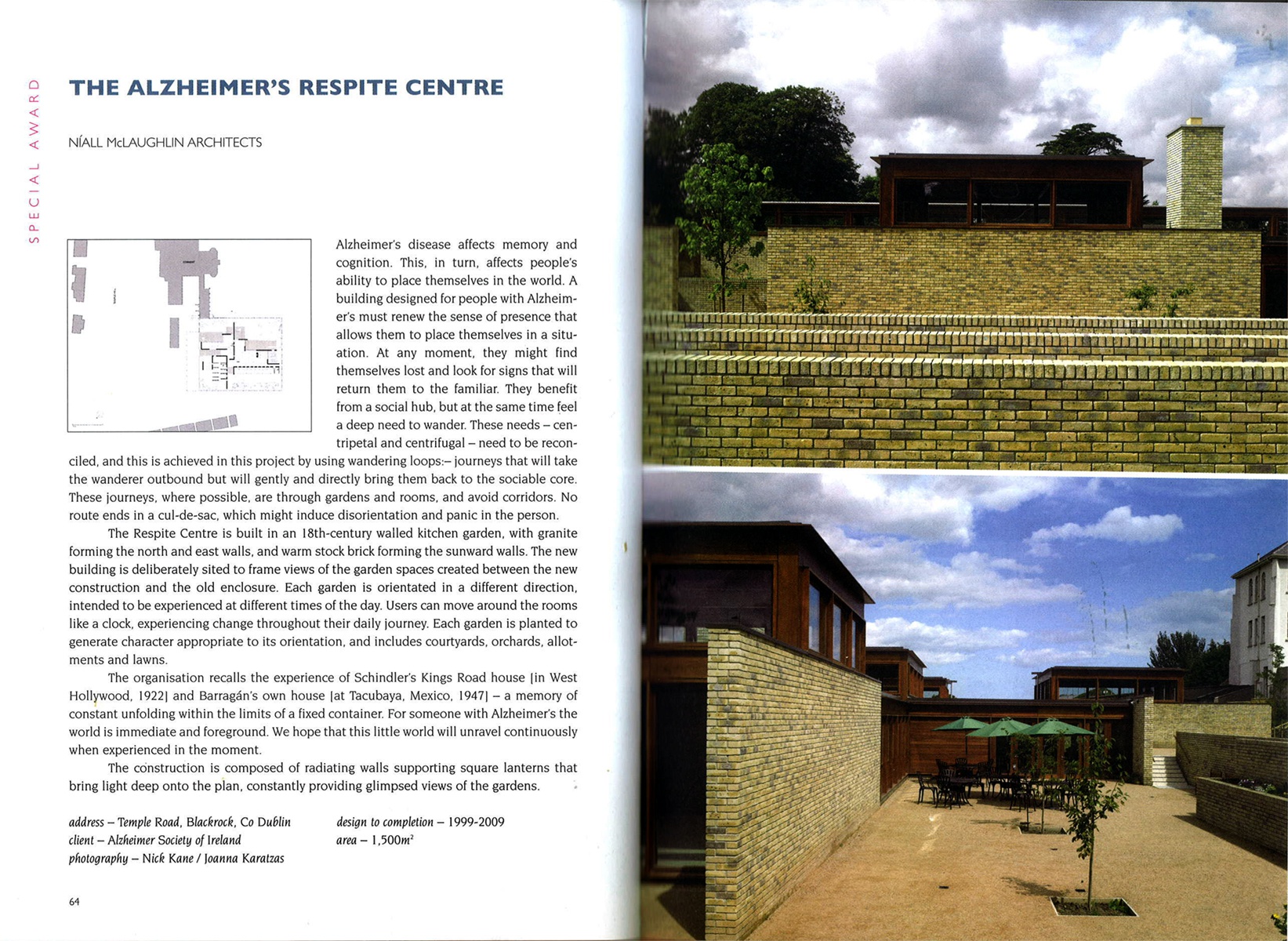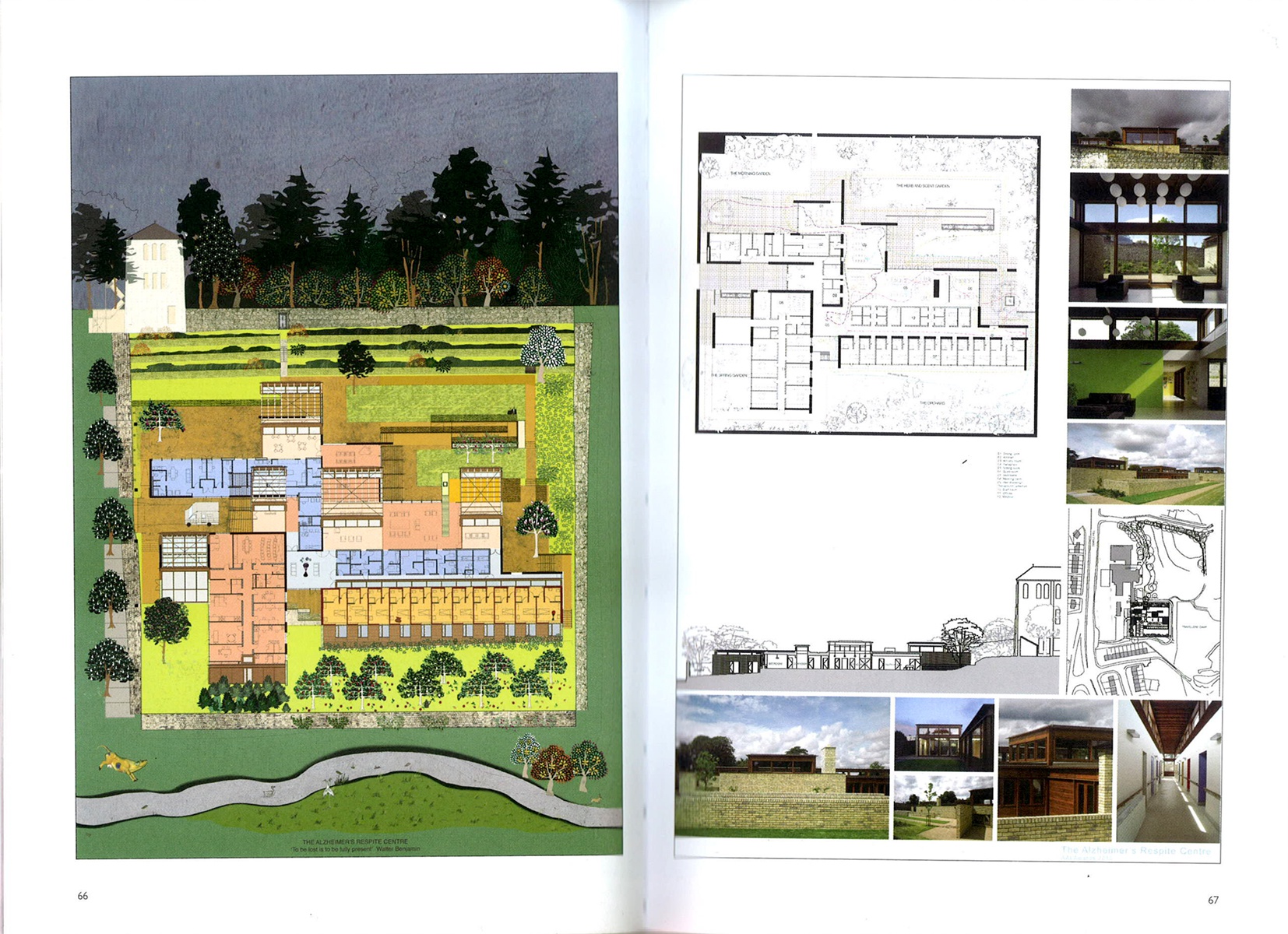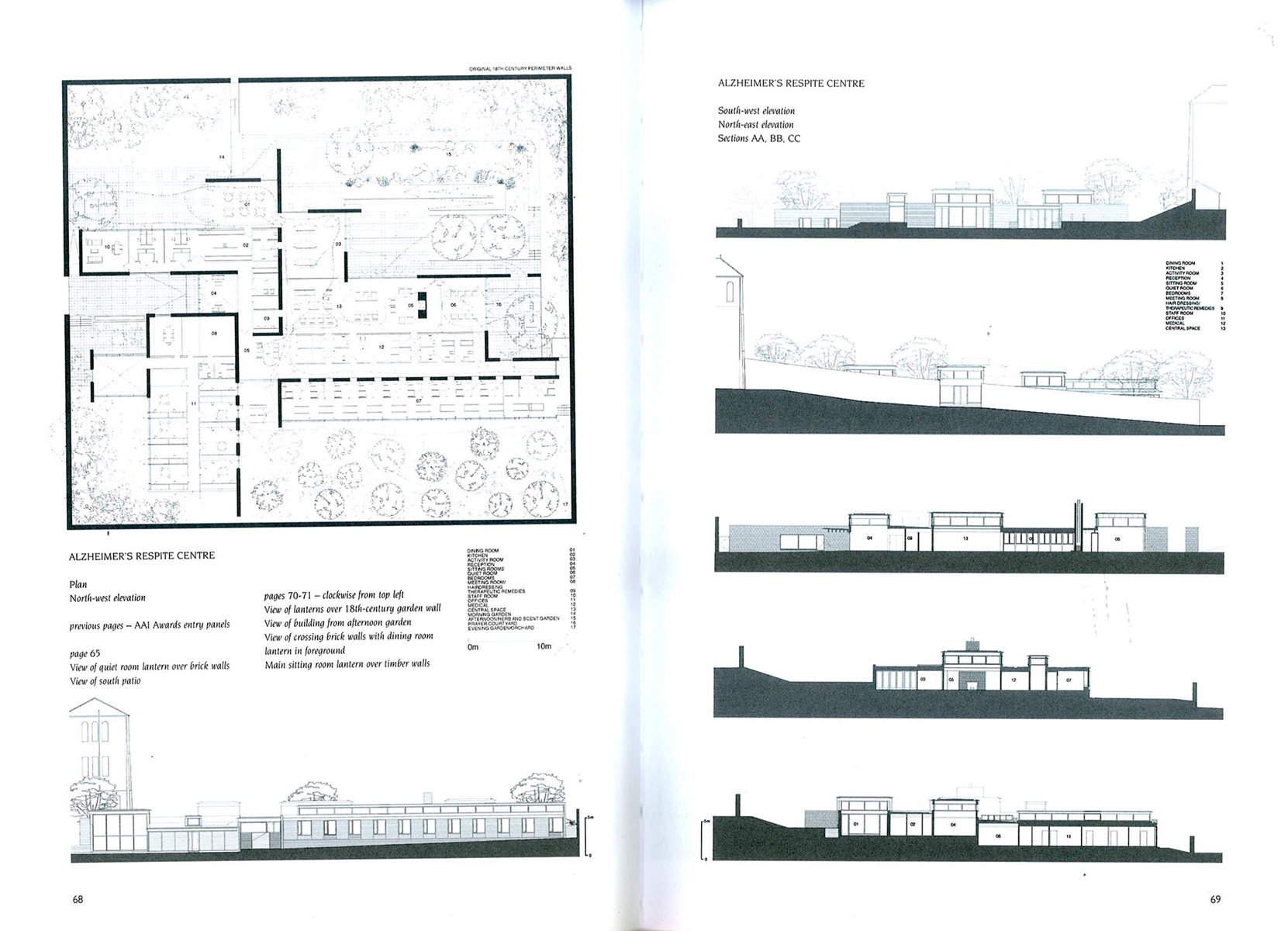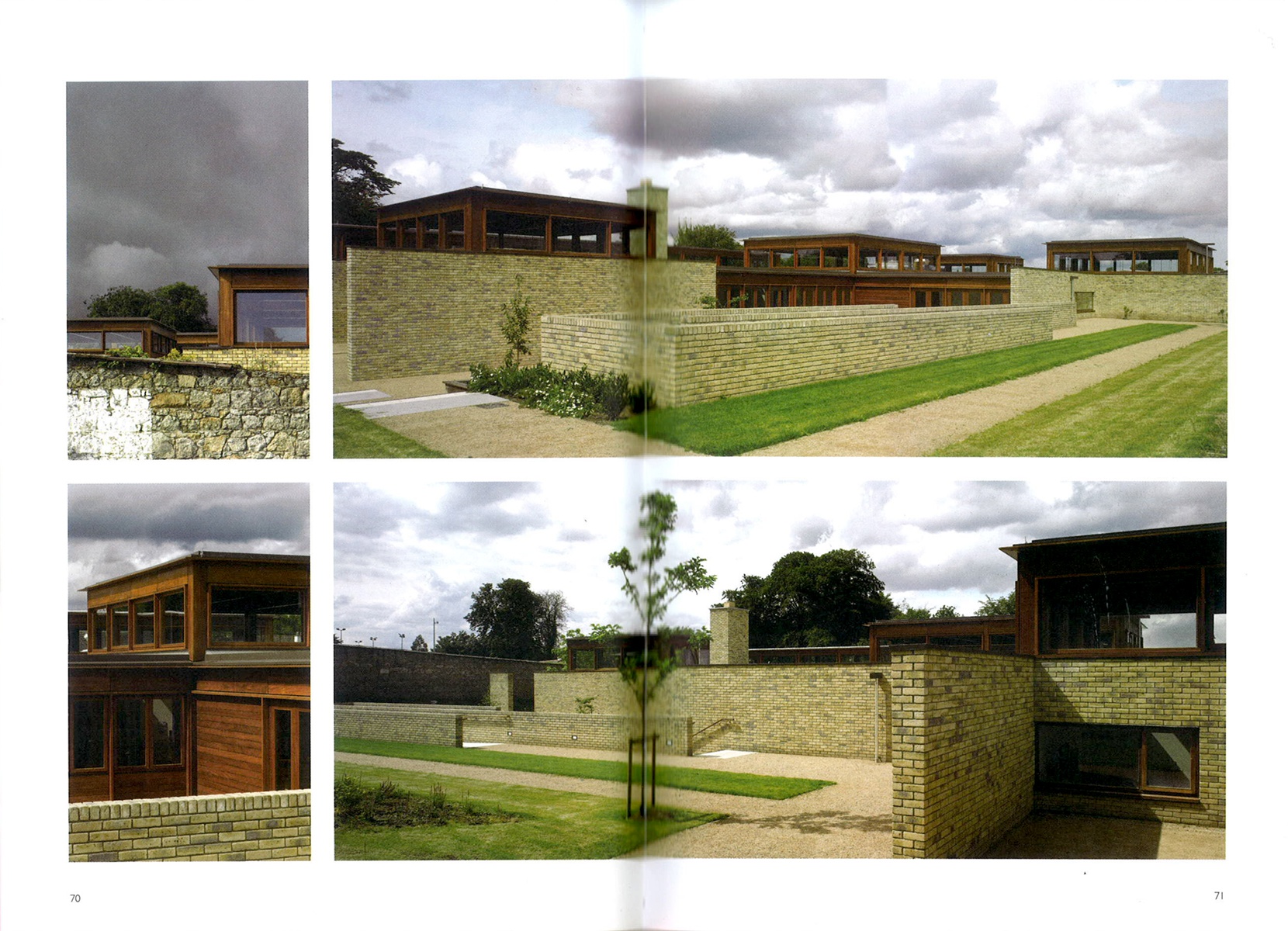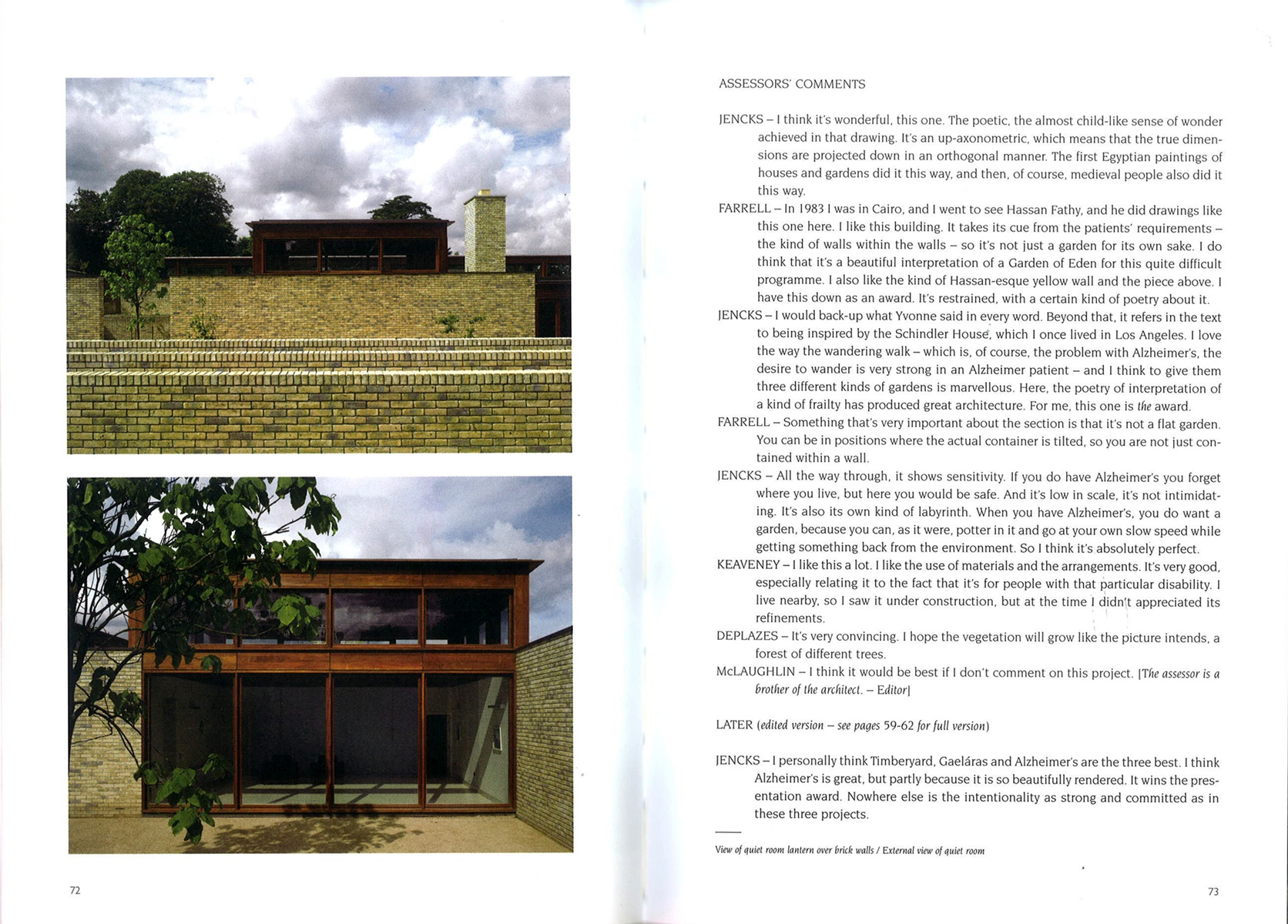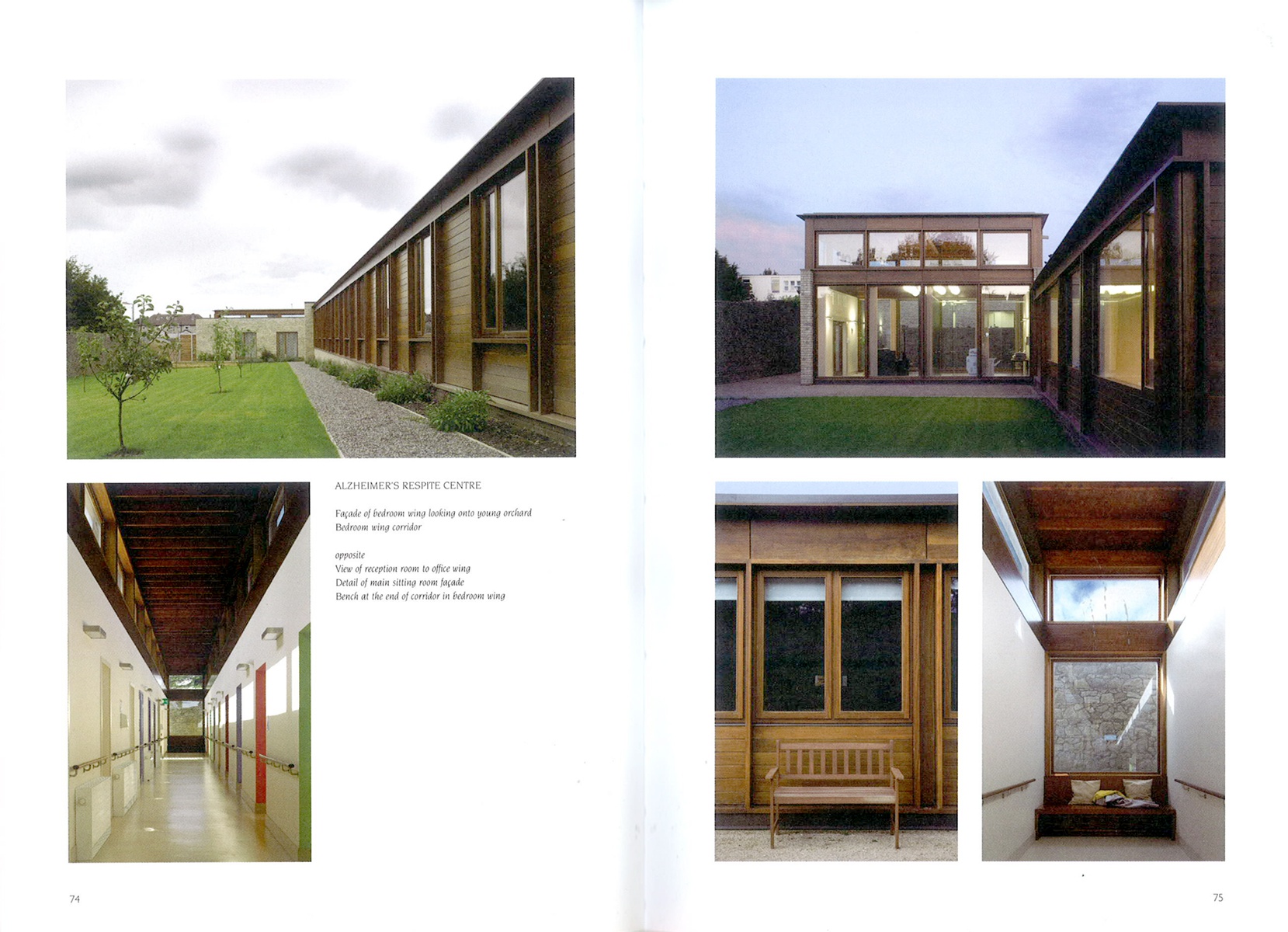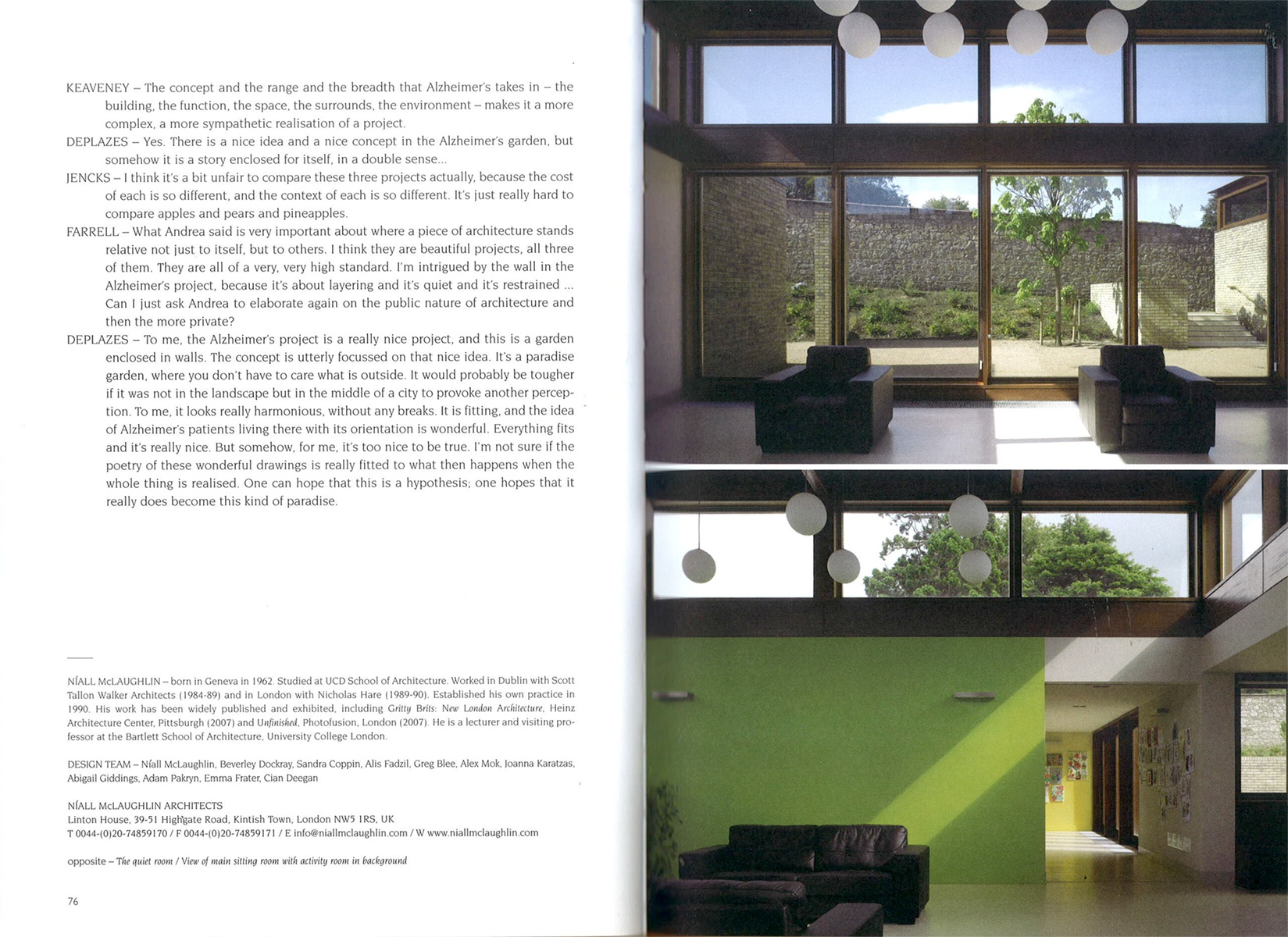New Irish Architecture 25
Published by Cork: Gandon Editions, 2010
Edited by John O’Regan & Nicola Dearey
Alzheimer’s disease affects memory and cognition. This, in turn, affects people’s ability to place themselves in the world. A building designed for people with Alzheimer’s must renew the sense of presence that allows them to place themselves in a situation. At any moment, they might find themselves lost and look for signs that will return them to the familiar. They benefit from a social hub, but at the same time feel a deep need to wander. These needs – centripetal and centrifugal – need to be reconciled, and this is achieved in this project by using wandering loops:- journeys that will take the wanderer outbound but will gently and directly bring them back to the sociable core. These journeys, where possible, are through gardens and rooms, and avoid corridors. No route ends in a cul-de-sac, which might induce disorientation and panic in the person.
The Respite Centre is built in an 18th-century walled kitchen garden, with granite forming the north and east walls, and warm stock brick forming the sunward walls. The new building is deliberately sited to frame views of the garden spaces created between the new construction and the old enclosure. Each garden is orientated in a different direction, intended to be experienced at different times of the day. Users can move around the rooms like a clock, experiencing change throughout their daily journey. Each garden is planted to generate character appropriate to its orientation, and includes courtyards, orchards, allotments and lawns. The organisation recalls the experience of Schindler’s Kings Road house in West Hollywood, 1922 and Barragan’s own house at Tacubaya, Mexico, 1947 – a memory of constant unfolding within the limits of a fixed container. For someone with Alzheimer’s the world is immediate and foreground. We hope that this little world will unravel continuously when experienced in the moment. The construction is composed of radiating walls supporting square lanterns that bring light deep onto the plan, constantly providing glimpsed views of the gardens.
Assessors’ Comments
JENCKS – I think it’s wonderful, this one. The poetic, the almost child-like sense of wonder achieved in that drawing. It’s an up-axonometric, which means that the true dimensions are projected down in an orthogonal manner. The first Egyptian paintings of houses and gardens did it this way, and then, of course, medieval people also did it this way.
FARRELL – In 1983 I was in Cairo, and I went to see Hassan Fathy, and he did drawings like this one here. I like this building. It takes its cue from the patients’ requirements – the kind of walls within the walls – so it’s not just a garden for its own sake. I do think that it’s a beautiful interpretation of a Garden of Eden for this quite difficult programme. I also like the kind of Hassan-esque yellow wall and the piece above. I have this down as an award. It’s restrained, with a certain kind of poetry about it.
JENCKS – I would back-up what Yvonne said in every word. Beyond that, it refers in the text to being inspired by the Schindler House, which I once lived in Los Angeles. I love the way the wandering walk – which is, of course, the problem with Alzheimer’s, the desire to wander is very strong in an Alzheimer patient – and I think to give them three different kinds of gardens is marvellous. Here, the poetry of interpretation of a kind of frailty has produced great architecture. For me, this one is the award.
FARRELL – Something that’s very important about the section is that it’s not a flat garden. You can be in positions where the actual container is tilted, so you are not just contained within a wall.
JENCKS – All the way through, it shows sensitivity. If you do have Alzheimer’s you forget where you live, but here you would be safe. And it’s low in scale, it’s not intimidating. It’s also its own kind of labyrinth. When you have Alzheimer’s, you do want a garden, because you can, as it were, potter in it and go at your own slow speed while getting something back from the environment. So I think it’s absolutely perfect.
KEAVENEY – I like this a lot. I like the use of materials and the arrangements. It’s very good, especially relating it to the fact that it’s for people with that particular disability. I live nearby, so I saw it under construction, but at the time I didn’t appreciated its refinements.
DEPLAZES – It’s very convincing. I hope the vegetation will grow like the picture intends, a forest of different trees.
McLAUGHLIN – I think it would be best if I don’t comment on this project. (The assessor is a brother of the architect. – Editor)
LATER (edited version – see pages 59-62 for full version )
JENCKS – I personally think Timberyard, Gaeláras and Alzheimer’s are the three best. I think Alzheimer’s is great, but partly because it is so beautifully rendered. It wins the presentation award. Nowhere else is the intentionality as strong and committed as in these three projects.
KEAVENEY – The concept and the range and the breadth that Alzheimer’s takes in – the building, the function, the space, the surrounds, the environment – makes it a more complex, a more sympathetic realisation of a project.
DEPLAZES – Yes. There is a nice idea and a nice concept in the Alzheimer’s garden, but somehow it is a story enclosed for itself, in a double sense…
JENCKS – I think it’s a bit unfair to compare these three projects actually, because the cost of each is so different, and the context of each is so different. It’s just really hard to compare apples and pears and pineapples.
FARRELL – What Andrea said is very important about where a piece of architecture stands relative not just to itself, but to others. I think they are beautiful projects, all three of them. They are all of a very, very high standard. I’m intrigued by the wall in the Alzheimer’s project, because it’s about layering and it’s quiet and it’s restrained … Can I just ask Andrea to elaborate again on the public nature of architecture and then the more private?
DEPLAZES – To me, the Alzheimer’s project is a really nice project, and this is a garden enclosed in walls. The concept is utterly focussed on that nice idea. It’s a paradise garden, where you don’t have to care what is outside. It would probably be tougher if it was not in the landscape but in the middle of a city to provoke another perception. To me, it looks really harmonious, without any breaks. It is fitting, and the idea of Alzheimer’s patients living there with its orientation is wonderful. Everything fits and it’s really nice. But somehow, for me, it’s too nice to be true. I’m not sure if the poetry of these wonderful drawings is really fitted to what then happens when the whole thing is realised. One can hope that this is a hypothesis: one hopes that it really does become this kind of paradise.
Download AAI Awards 2010
